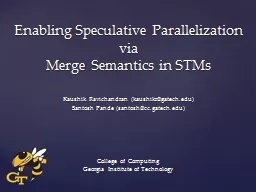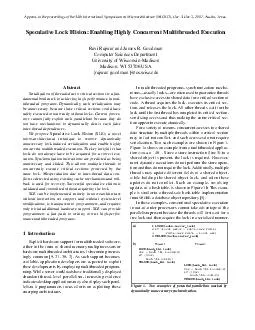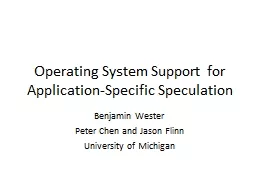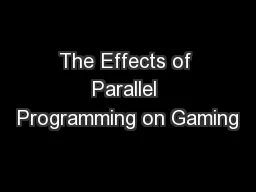PPT-Enabling Speculative Parallelization
Author : giovanna-bartolotta | Published Date : 2016-07-17
via Merge Semantics in STMs Kaushik Ravichandran kaushikrgatechedu Santosh Pande santoshccgatechedu College of Computing Georgia Institute of Technology Introduction
Presentation Embed Code
Download Presentation
Download Presentation The PPT/PDF document "Enabling Speculative Parallelization" is the property of its rightful owner. Permission is granted to download and print the materials on this website for personal, non-commercial use only, and to display it on your personal computer provided you do not modify the materials and that you retain all copyright notices contained in the materials. By downloading content from our website, you accept the terms of this agreement.
Enabling Speculative Parallelization: Transcript
Download Rules Of Document
"Enabling Speculative Parallelization"The content belongs to its owner. You may download and print it for personal use, without modification, and keep all copyright notices. By downloading, you agree to these terms.
Related Documents














